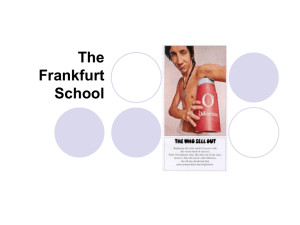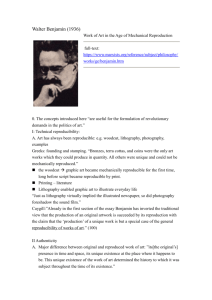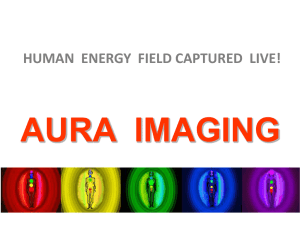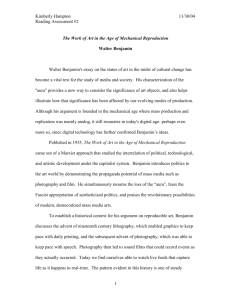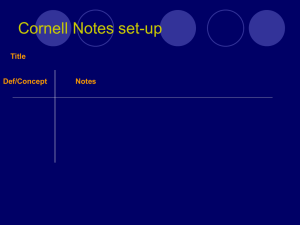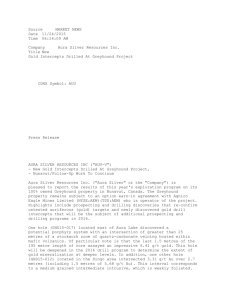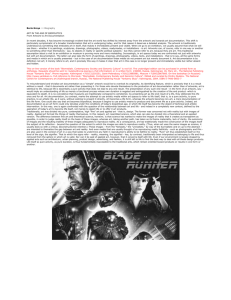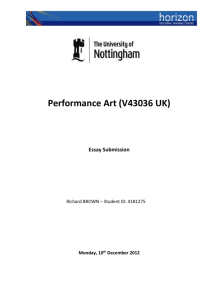Walter Benjamin
advertisement
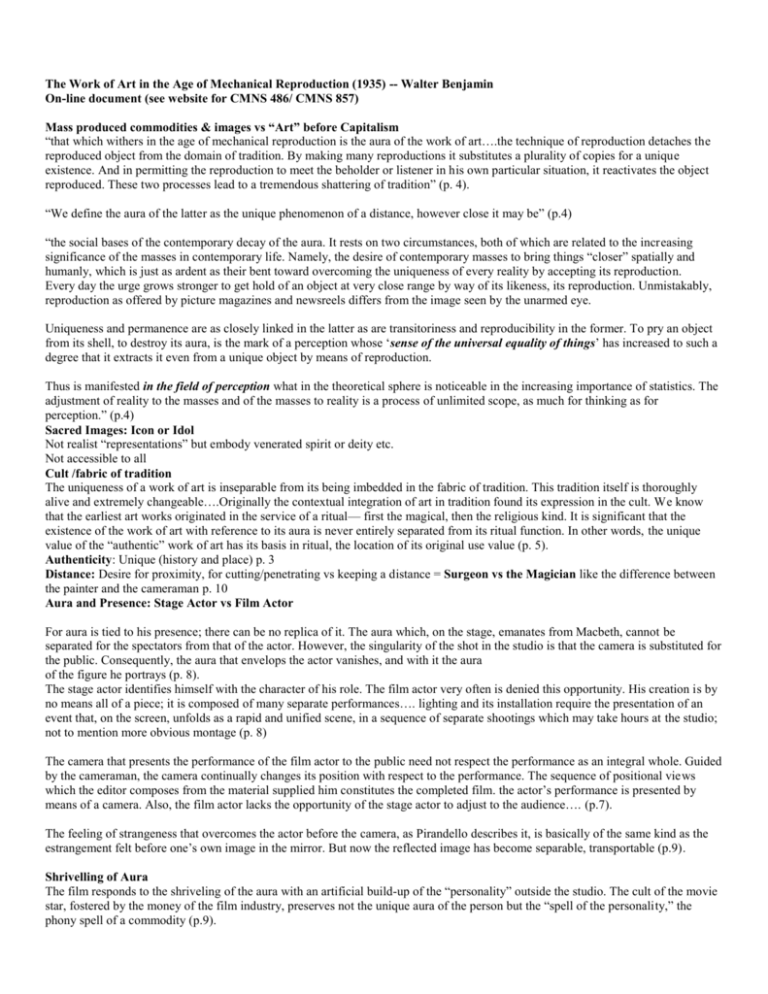
The Work of Art in the Age of Mechanical Reproduction (1935) -- Walter Benjamin On-line document (see website for CMNS 486/ CMNS 857) Mass produced commodities & images vs “Art” before Capitalism “that which withers in the age of mechanical reproduction is the aura of the work of art….the technique of reproduction detaches the reproduced object from the domain of tradition. By making many reproductions it substitutes a plurality of copies for a unique existence. And in permitting the reproduction to meet the beholder or listener in his own particular situation, it reactivates the object reproduced. These two processes lead to a tremendous shattering of tradition” (p. 4). “We define the aura of the latter as the unique phenomenon of a distance, however close it may be” (p.4) “the social bases of the contemporary decay of the aura. It rests on two circumstances, both of which are related to the increasing significance of the masses in contemporary life. Namely, the desire of contemporary masses to bring things “closer” spatially and humanly, which is just as ardent as their bent toward overcoming the uniqueness of every reality by accepting its reproduction. Every day the urge grows stronger to get hold of an object at very close range by way of its likeness, its reproduction. Unmistakably, reproduction as offered by picture magazines and newsreels differs from the image seen by the unarmed eye. Uniqueness and permanence are as closely linked in the latter as are transitoriness and reproducibility in the former. To pry an object from its shell, to destroy its aura, is the mark of a perception whose ‘sense of the universal equality of things’ has increased to such a degree that it extracts it even from a unique object by means of reproduction. Thus is manifested in the field of perception what in the theoretical sphere is noticeable in the increasing importance of statistics. The adjustment of reality to the masses and of the masses to reality is a process of unlimited scope, as much for thinking as for perception.” (p.4) Sacred Images: Icon or Idol Not realist “representations” but embody venerated spirit or deity etc. Not accessible to all Cult /fabric of tradition The uniqueness of a work of art is inseparable from its being imbedded in the fabric of tradition. This tradition itself is thoroughly alive and extremely changeable….Originally the contextual integration of art in tradition found its expression in the cult. We know that the earliest art works originated in the service of a ritual— first the magical, then the religious kind. It is significant that the existence of the work of art with reference to its aura is never entirely separated from its ritual function. In other words, the unique value of the “authentic” work of art has its basis in ritual, the location of its original use value (p. 5). Authenticity: Unique (history and place) p. 3 Distance: Desire for proximity, for cutting/penetrating vs keeping a distance = Surgeon vs the Magician like the difference between the painter and the cameraman p. 10 Aura and Presence: Stage Actor vs Film Actor For aura is tied to his presence; there can be no replica of it. The aura which, on the stage, emanates from Macbeth, cannot be separated for the spectators from that of the actor. However, the singularity of the shot in the studio is that the camera is substituted for the public. Consequently, the aura that envelops the actor vanishes, and with it the aura of the figure he portrays (p. 8). The stage actor identifies himself with the character of his role. The film actor very often is denied this opportunity. His creation is by no means all of a piece; it is composed of many separate performances…. lighting and its installation require the presentation of an event that, on the screen, unfolds as a rapid and unified scene, in a sequence of separate shootings which may take hours at the studio; not to mention more obvious montage (p. 8) The camera that presents the performance of the film actor to the public need not respect the performance as an integral whole. Guided by the cameraman, the camera continually changes its position with respect to the performance. The sequence of positional views which the editor composes from the material supplied him constitutes the completed film. the actor’s performance is presented by means of a camera. Also, the film actor lacks the opportunity of the stage actor to adjust to the audience…. (p.7). The feeling of strangeness that overcomes the actor before the camera, as Pirandello describes it, is basically of the same kind as the estrangement felt before one’s own image in the mirror. But now the reflected image has become separable, transportable (p.9). Shrivelling of Aura The film responds to the shriveling of the aura with an artificial build-up of the “personality” outside the studio. The cult of the movie star, fostered by the money of the film industry, preserves not the unique aura of the person but the “spell of the personality,” the phony spell of a commodity (p.9).
